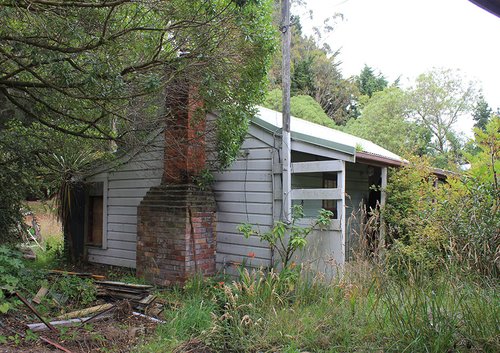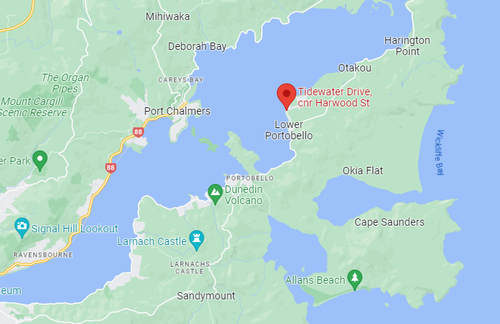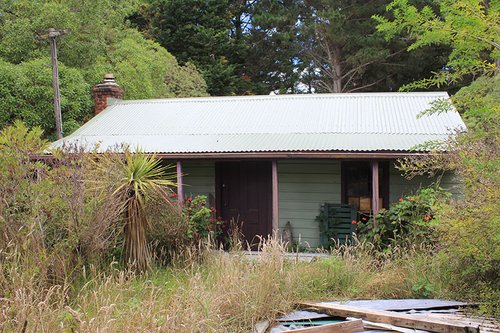
By Alexandra Porter
Last year I was digitising a 1948 Mobile Recording Unit oral history, as part of a larger digitisation project. While digitising this item I heard the name Octavius Harwood crop up, in an account by a Mrs McDonald from Waikouaiti. I remembered the name of Octavius Harwood (it’s not a name you forget) from my partner’s whakapapa (genealogy), when we were researching names for our son Elijah fourteen years ago. So I got in touch with taua Natalie, Eli’s grandmother, who lives near Taiaroa Head, on the Otago Peninsula and the Harwood-McDonald story began to unfold.
Mrs McDonald, of Palmerston North, interviewed by the New Zealand Broadcasting Service, 29 September 1948
Octavius Francis Harwood, born in Stepney Green, England, was the eighth of ten children to Robert Harwood, a sea captain, and Mary (nee Soutter) – whose family owned the company, Soutter ships. After a classical education Harwood followed in his father’s footsteps and joined the mariner’s life, which led him to Sydney in May 1837. There he met George Weller of the infamous and well-established Australasian whaling and trading brothers, and in the following year sailed on to New Zealand to take up the role of storekeeper and clerk at their Ōtākou station [1] .
In 1839, on this sparsely populated, sheep farming coastline, south-west of the Dunedin Harbour, Harwood built his first house. He married Titapu, daughter of local chief Pokene, as was common practice (for want of a better word) to strengthen Māori-settler community relations at that time. Three years later, in June 1842, Titapu died of tuberculosis and her son, Te Here (later known as Harry West), whom she had brought into the marriage, was taken to Foveaux Straight and raised by his relations.


Octavius Francis Harwood’s first house, built in the early 1840s (currently under renovation). Photo by Alexandra Porter, January 2016.
In late 1843 Pokene then arranged for his niece Piro, who had also recently lost a spouse, to take refuge with Harwood. The couple had twins in early 1848: a boy, Tiari, and girl, Mere, though the boy died aged only two months old. It is through the union of Octavius and Piro, and the descendants of their daughter Mere [2] that Eli’s whakapapa can be traced and Octavius Harwood [3] established as his great, great, great, great, great grandfather.
In 1848 Harwood shifted careers from the whaling store to sheep farming on leasehold land at Ōtākou and married again, to a young Scottish immigrant, Janet Robertson. They expanded the Harwood whānau with a further ten children. The eldest of these, a daughter named Mary-Ann, has now been identified as the grandmother to Mrs Helen Reid McDonald [4], our oral history speaker, and great niece to Eli’s great, great, great, great grandmother, Mere Piro Harwood.
In the Mobile Recording Unit interviews Mrs McDonald, as she is simply referred to on the original lacquer disc labels, is asked to describe whatever she can recall of her great grandfather. Impressions include a well-dressed, grumpy Victorian gentleman, with a strong English accent, who had little time for children, and asserted distinctly formal manners within his marital relations. In this particular recording Mrs McDonald describes mostly third-hand recollections about Harwood [5], including his interest in collecting moa bones (found near his first house) and passion for taxidermy, all of which were displayed in a small, self-curated museum in his later years.
Much to my delight, when Eli and I visited whānau on the peninsula last summer his taua arranged for us to view this first house. The house is located on Stepney Ave, a few kilometres south-west of Ōtākou, in the settlement now simply signposted “Harwood.” So my son found himself standing on the doorstep of the pioneer’s cottage, open to a fascinating family landscape, all prompted by the preservation of Mrs McDonald’s Mobile Recording Unit interview. Although this story is our personal journey, it speaks for many and inspires my work as Audio Conservator to bring New Zealand’s audio heritage into the public domain.

Octavius Francis Harwood’s first house, built in the early 1840s (currently under renovation). Photo by Alexandra Porter, January 2016.
References
[1] Family history sourced from online documents by Mac Harwood, Nelson, New Zealand.
[2] Mere Piro Harwood, HAKUI, Women of Kai Tahu (Otago Museum, 2016), p. 23.
[3] Octavius Francis Harwood, Snr. (1816 – 1900).
[4] Family history notes supplied by Paul and Debbie Harwood, Otago, New Zealand.
[5] Some of the facts from Mrs McDonald’s interviews do not reconcile with Harwood family records. Note Mrs McDonald was born three years after Harwood’s death and she seems to have mistaken Octavius (Snr) for somebody else, as children sometimes do.
Audio clip from Ngā Taonga Sound & Vision Radio Collection, all rights reserved. To enquire about re-use of these items please contact us.